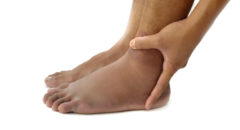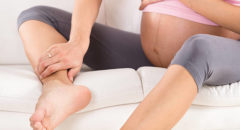
Blood clots in the veins, particularly those that break off and travel to the lungs, can be fatal and have become increasingly so. In fact, one in three Blacks has at least one variant that increases their risk making them 30 to 60 percent more likely to suffer from the condition known as venous thromboembolism (VTE). Yet many adults know little about their risks or the growing evidence that healthy habits can help prevent clots.
"A key barrier in the United States is that awareness of this disease is not very good," Dr. Mary Cushman says.
What is VTE?
VTE includes two types of clots: deep vein thrombosis, called DVT, usually in the leg, and pulmonary embolism, or PE, which is when a DVT breaks free and lodges in the lungs, where they often are fatal. There were roughly 370,000 PE and 857,000 DVT events in the United States in 2016, the last year for which statistics were available, according to American Heart Association estimates.
RELATED: 9 Signs You May Have A Leg Blood Clot
7 Lifestyle changes to prevent VTE
There are a number of lifestyle changes you can make to prevent yourself from developing VTE. The seven metrics, known as the American Heart Association's Life's Simple 7 include:
- smoking status
- total cholesterol
- diet score
- blood pressure
- fasting glucose
- obesity
- physical activity
However, "not all of these habits confer the same benefit," Dr. Peter Henke, a vascular surgeon says.
RELATED: 5 Simple Ways To Prevent A Blood Clot
The importance of tackling obesity
Cushman, medical director of the Thrombosis and Hemostasis Program at the University of Vermont Medical Center in Burlington, has spent years researching the impact of obesity and other lifestyle factors on these clots.
Her work shows some of that risk can be lowered through lifestyle changes. Her most recent study, published in the journal "Arteriosclerosis, Thrombosis", and "Vascular Biology", measured the impact of seven metrics for cardiovascular health on people at high genetic risk for VTE. It found a strong association between two of those metrics, higher physical activity and ideal body weight, and a lower incidence of
clots in people at high genetic risk.
"The size of the impact of physical activity and having a normal weight on reducing the risk of clots in those at high genetic risk was even more than I had imagined it might be," Cushman says. "If you have a high genetic risk for VTE and you did one to three bouts a week of physical activity (enough to work up a sweat), you'd have a 28% lower risk of developing clots. And, if your body mass index was less than 25, compared to someone who was obese (a BMI greater than 30), you'd have a 45% lower risk."
STUDY: Tall People At Increased Risk For Deadly Blood Clots
Tackling family history and genetics
Aside from the lifestyle changes you can make to prevent your risk of developing VTE, there are some risk factors that you can’t prevent. However, you can modify your risk. These include family history, certain genetic factors and prior episodes of clotting.
"If you have a known family history of VTE, or if you have had a clot in the past, the message here is that for the most part, you can modify your risk for having a future clot," Henke adds. "If you know you are at high risk, it is an impetus to adopt these seven lifestyle habits, which, frankly, everyone should adopt anyway."
And find out your family history, she shares. "If you have a close relative who had a clot, then your risk is twice as high as other people. The more first-degree relatives you have who had clots (those are parents, children or siblings) the higher your risk."
RELATED: What Every Traveler Needs To Know About DVT
Symptoms of VTE
PE and DVT kill up to 100,000 Americans each year, according to the Centers for Disease Control and Prevention. A study published in August in the Journal of the American Heart Association found death rates for pulmonary embolism for the overall population, which had been falling, began rising over the past decade, with the biggest increases seen in those under 65.
Cushman encourages people to learn the symptoms of DVT. They include:
- swelling in the affected leg (rarely both legs)
- pain or tenderness in the legs (The pain often starts in your calf and can feel like cramping or soreness)
- red streaks or other skin discoloration
- skin that feels warm to the touch
Symptoms of pulmonary embolism include:
- shortness of breath
- rapid breathing
- chest pain
- a rapid heart rate
- lightheadedness
When to see a doctor
You should seek medical help if you are experiencing any symptoms of DVT, especially if you develop the life-threatening complication, pulmonary embolism, as a result of DVT.








